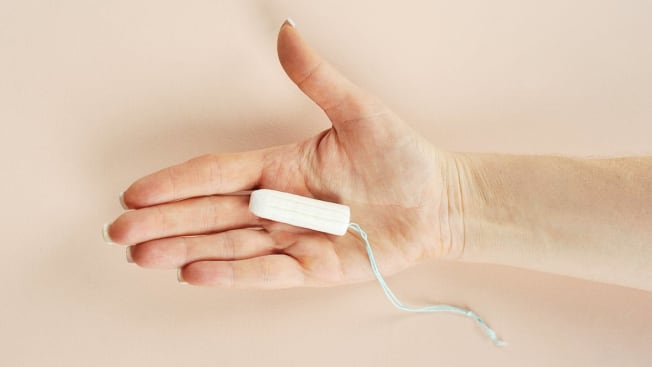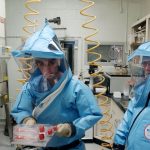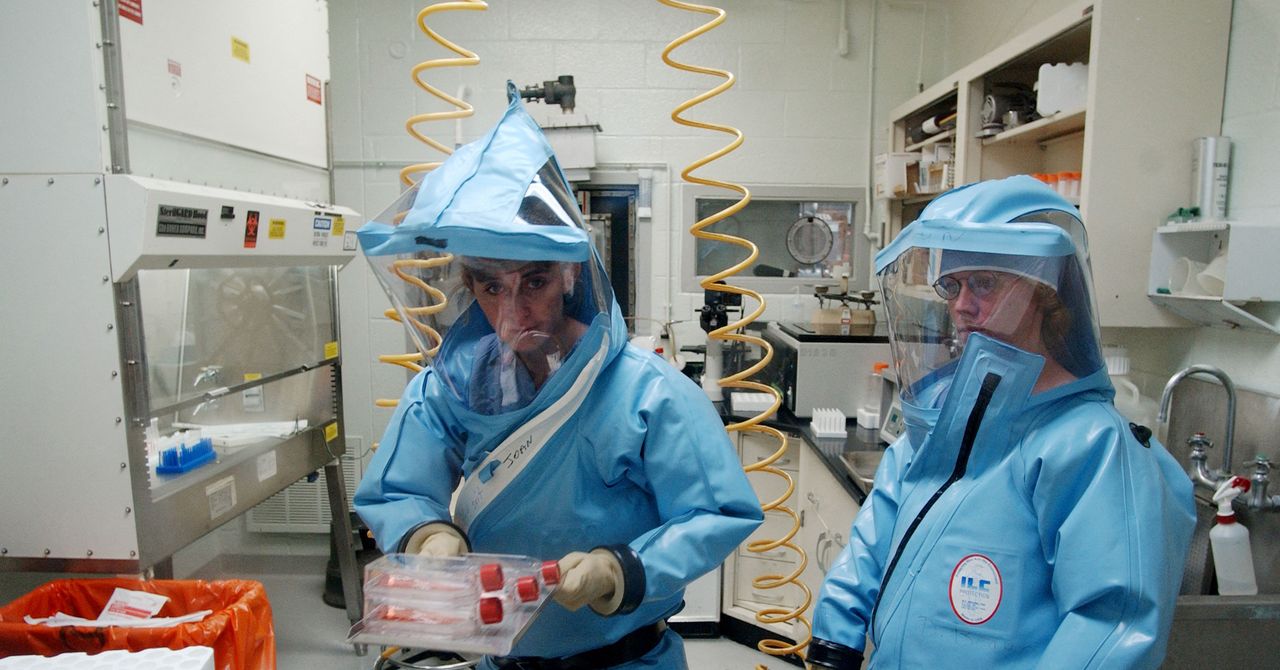Even tampons labeled organic can contain worrisome ingredients. Here are the potential risks and how to stay safe.

By Catherine Roberts
If you’ve ever used tampons, then you’re probably familiar with the basic tenets of tampon safety: Don’t leave one in for more than 8 hours, use the lowest absorbency you can based on your flow, and know the signs of toxic shock syndrome, a disease linked to tampon use that can cause a sudden high fever, vomiting, dizziness, a rash, and more.
While TSS is rare, lately a number of published studies, lawsuits, and research by environmental and consumer groups have suggested that tampon use could expose people to potentially harmful substances, including microplastics, PFAS (per- and polyfluoroalkyl substances), volatile organic chemicals (VOCs), heavy metals, and more.
In response to consumer concerns about a variety of environmental contaminants, many companies—both newer direct-to-consumer brands, such as Cora and Lola, and old standbys in the market, like Playtex and Procter & Gamble’s Tampax—have begun marketing some tampons as cleaner, more natural, and environmentally friendly. In particular, many now market themselves in some way as “organic.”
While the organic label found on food items conveys a great deal of information about how they were grown and processed, it’s less clear what such a designation means for a tampon. One key thing to know: When it comes to the biggest known risk of using tampons—TSS—there’s little evidence that an organic tampon is safer. And speaking more broadly, there are still major gaps in our understanding of what tampons and other menstrual products actually contain, and what risks they may potentially pose to our health.
We explain what we know about what’s in tampons labeled as organic, what’s missing from our understanding of tampon safety, and what you need to know about using these menstrual products safely.
What Exactly Is an ‘Organic’ Tampon?
Organic has a highly specific legal meaning when it comes to food and other agricultural products, including textiles. Federal standards govern how crops must be grown in order to qualify to use the USDA Organic seal from the Department of Agriculture. These require the use of methods that promote soil health and forbid the use of substances like synthetic fertilizers and most synthetic pesticides.
Tampons are regulated mainly by the Food and Drug Administration because they are considered medical devices, and the FDA doesn’t govern the use of the term “organic” on product labels. The USDA, though, does restrict the use of the term, even for products that aren’t food.
This is most relevant to tampons with respect to the cotton many of them contain. As a textile, cotton can be grown to National Organic Program standards. For both textile products and personal care products, the NOP requires that any ingredients claimed to be organic actually be certified as such. Textiles can be certified under USDA Organic standards or another international set of standards known as the Global Organic Textile Standard.
But many tampons contain additional ingredients, such as plastics or additives, to which the NOP standards may not apply. That means tampons may be labeled as made with organic cotton, even if they also use other materials that are synthetic—and even if they contain potentially harmful chemicals such as VOCs or PFAS.
This can lead to somewhat confusing label claims. According to Alexandra Scranton, director of science and research at Women’s Voices for the Earth (WVE), before greener and more natural products were so fashionable, the few tampon brands marketing themselves as organic tended to be simple products, made with only cotton for the tampon and string.
“What we’ve noticed is, you’ll see on the package, it’ll say ‘100 percent organic cotton core,’ which is really key language. If you look at their actual ingredients, they’ll often have a [plastic] polypropylene or polyethylene sheath on top of that organic core. So you’re still getting the plastic, you still may be getting [the whitening chemical] titanium dioxide, you still may be getting all kinds of other additives,” Scranton says. “That doesn’t seem entirely truthful to me.”
Are All-Cotton Tampons Less Likely to Cause TSS?
Over the years, various tampon makers have sometimes implied or even outright stated that using a tampon made only with cotton, rather than one containing rayon, can reduce your risk of TSS. But although TSS associated with menstruation isn’t fully understood, existing evidence suggests that such claims aren’t accurate.
The first tampon scientists implicated in the TSS scare of the early 1980s was Rely, a tampon made with very highly absorbent synthetic materials. (Advertising said: “It even absorbs the worry.”) But it wasn’t the only tampon linked to TSS cases. Some early evidence suggested that the synthetic materials used to boost tampon absorbency might have been partly responsible for triggering TSS. That would mean that all-cotton tampons containing no synthetic absorbent materials could be less likely to contribute to TSS. Other researchers have countered that any highly absorbent tampons (including all-cotton ones) introduce a greater volume of oxygen into the vaginal environment. And it is that oxygen, they contend, which feeds the growth of the staph bacteria that can lead to TSS.
To this day, the exact conditions that allow for a case of TSS to develop aren’t fully understood, and a variety of other factors (such as a person’s vaginal microbiome) likely play a part. A “perfect storm” of factors seems to have come together, according to Nancy Reame, PhD, professor emerita at the Columbia University School of Nursing in New York City who has studied tampon safety.
The crucial thing to remember, however, is that using an all-cotton or even an all-organic-cotton tampon isn’t necessarily less likely to contribute to TSS. Recent research in a small group of French women found that just three factors were associated with a greater risk of TSS: not reading the product directions, leaving a tampon in overnight, and leaving a tampon in for more than 6 hours (a notable time frame, given that the Centers for Disease Control and Prevention recommends 8 hours as the upper limit on leaving a tampon in).
Still, keep in mind that TSS is very rare—even rarer than it was a few decades ago—and at least half of cases are not related to menstruation.
What We Know About Other Tampon Ingredients
Following the 1980 TSS scare, a handful of synthetic materials were discontinued as tampon ingredients. Today, the FDA clears tampons for sale only if they’re made primarily out of cotton, rayon, or a mixture of the two.
But other materials that aren’t meant to absorb menstrual blood may be present in the tampon string—for example, or an outer layer that encases the absorbent materials.
For many years, consumers had little information about the contents of their tampons (and other menstrual products), because manufacturers weren’t required to disclose that information on product labels. But a 2019 law in New York state mandating that menstrual product makers disclose all ingredients and additives on product labels means that some consumers now have greater transparency into what their tampons contain. A 2022 analysis by Women’s Voices for the Earth collected information from a variety of product labels and found that tampons contained plenty of ingredients beyond cotton and rayon, including plastics like polyethylene and polypropylene, fragrances, dyes and colorants, and many more.
In some cases, particularly with ingredients like “fragrance,” those disclosures don’t actually provide a lot of information, because “fragrance” itself can encompass a wide variety of chemicals that don’t need to be individually disclosed.
Organic cotton does likely have at least some environmental advantages over nonorganic cotton, WVE’s Scranton says, and for some consumers that may be reason enough to buy them. But are tampons made with organic cotton also better for your health? The answer to that question isn’t known.
In order to understand potential long-term health risks from tampons (organic or not), researchers need to answer a number of questions, says Jenni Shearston, PhD, a postdoctoral scholar at the University of California, Berkeley. First, what contaminants are even in tampons to begin with? Second, do any contaminants present in tampons enter the body? Next, if they can get into the body, are they doing so at concentrations high enough to cause concern?
We need solid answers to all of these questions before we can begin to figure out how to reduce our exposure to any potential contaminants, she says.
There is reason to believe that potentially harmful chemicals present in tampons might find their way into the rest of the body. The skin of the vulva and vagina are quite different from the skin on most of the rest of the body, says Stuart Batterman, PhD, professor of environmental health sciences at the University of Michigan School of Public Health in Ann Arbor. “Skin in this area is very, very sensitive and has a very high what we call permeability of chemicals. So it’s absorbed into the blood quite rapidly.”
Batterman is one of several researchers working on answering these early questions of what contaminants might be in menstrual products, and whether such products are a meaningful source of exposure to problematic chemicals. In a 2020 study published in the journal Environment International, Batterman and his co-authors tested a variety of feminine hygiene products for the presence of volatile organic chemicals (VOCs), some of which have been implicated as possible contributors to a range of health effects, from skin irritation to cancer. Notably, the study found that products with labels like “organic” and “for sensitive skin” didn’t seem to have fewer VOCs than products without such labels.
The problem, Batterman says, is that, when it comes to feminine hygiene products, the presence of an organic label “doesn’t mean that the material has been tested or meets any meaningful criteria with respect to VOCs.”
A label of organic also, apparently, has little bearing on the potential presence of heavy metals in tampons. In a 2024 study, co-authored by Berkeley’s Shearston, researchers tested products from 14 brands of tampons for heavy metals. They detected metals such as lead, arsenic, and cadmium in all or nearly all of the tampons they tested. And while organic tampons generally had lower levels of lead than non-organic ones, organic tampons also had higher levels of arsenic than non-organic.
Other recent research has identified additional substances of concern in some menstrual products, including microplastics, phthalates, and—to a lesser extent—bisphenols like BPA. Bisphenols and phthalates have been implicated by a growing body of research as possible endocrine disruptors: chemicals that can interfere with the body’s hormones, even at very small doses.
Testing by various advocacy groups has revealed other potential contaminants. A 2018 test conducted by Women’s Voice for the Earth found that tampons made with rayon contained carbon disulfide, an industrial chemical that has been linked to health problems at high levels. Meanwhile, the all-cotton tampons the group tested didn’t contain any of this chemical.
While the presence of all of these substances may sound alarming, just because a given chemical is present in a tampon, “doesn’t mean that it’s coming out of the tampon or getting into your body,” Shearston says. Still, this is a question that should be given more attention in future research, conclude the authors of the 2024 study that found heavy metals in tampons.
In the meantime, some consumers may prefer to take a cautious approach. “I don’t have to know the exact effect of any of those things to have concern,” says Amy Ziff, the founder of Made Safe, an independent organization that screens household products for potentially harmful ingredients and certifies those that are safer for human and ecosystem health. (CR is currently partnering with Made Safe to pilot integrating the group’s analyses and recommendations into its content.) “I don’t want to insert potentially harmful chemicals and ingredients into my body or have it sitting right next to my body, especially in the most absorptive tissue in a really sensitive place,” Ziff says.
Earning the Made Safe label, she notes, involves a review of all the ingredients manufacturers say are in a product. Some tampons and other menstrual products are certified by Made Safe, and this is one way of avoiding a multitude of potential contaminants in period products.
Safer Tampon Use
Getting better information about tampon safety—whether that’s regarding the risk from contaminants or from TSS—is challenging. Health risks directly attributable to chemical exposures from period products will be difficult to pin down. And when it comes to TSS, the rarity of cases means it’s a difficult disease to study.
And while major gaps still exist in the research, Reame at least is optimistic that menstruation is finally receiving more attention both from tech companies and from public health agencies as “an important biomarker for health,” she says. “It’s just amazing to me that it has been just the last function in the human body that’s been examined.”
When using tampons, following all the directions on the label, changing them every 4 to 8 hours, and avoiding using them overnight are all important steps.
While you’re shopping for tampons, you can take a few additional steps if you’d prefer to avoid at least some of the additives present in many brands:
- Read labels carefully and, if ingredients are listed, pick products with fewer, simpler ingredients.
- Look for tampons that don’t contain plastic, including polyester, polypropylene, or polyethylene.
- Avoid products with fragrance or colorants.
Consumer Reports is an independent, nonprofit organization that works side by side with consumers to create a fairer, safer, and healthier world. CR does not endorse products or services, and does not accept advertising. Copyright © 2024, Consumer Reports, Inc.









